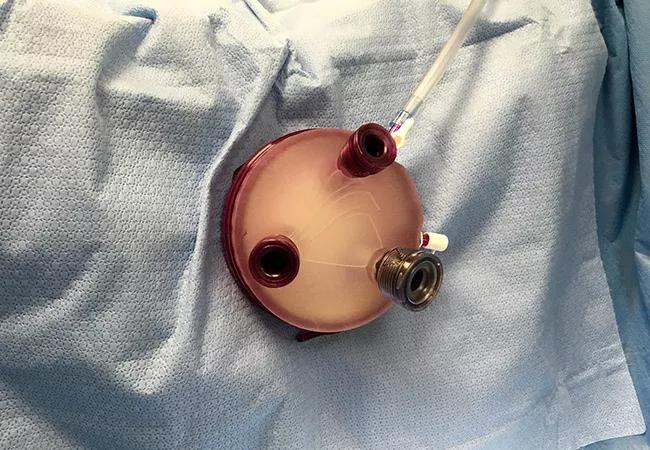The next evolution in MIS is coming sooner than you think

By Karl Jallad, MD, and Marie Fidela R. Paraiso, MD
Advertisement
Cleveland Clinic is a non-profit academic medical center. Advertising on our site helps support our mission. We do not endorse non-Cleveland Clinic products or services. Policy
Considerable interest in pushing the frontiers of minimally invasive surgery has led to the emergence of a new field in minimally invasive gynecologic surgery. Natural orifice transluminal endoscopic surgery, or NOTES, represents one of the most significant innovations in surgery to emerge since the advent of laparoscopy.
NOTES can be performed via a variety of approaches, including through the stomach, esophagus, bladder and rectum. But the majority of cases have been performed transvaginally. Potential advantages of natural orifice surgery in gynecology include the lack of abdominal incisions, less operative pain, shorter hospital stay, improved visibility, and the possibility to circumvent extensive lysis of adhesions to reach the pelvic cavity.
We performed the first NOTES salpingo-oophorectomy in the United States. A 58-year-old woman with stage 3 pelvic organ prolapse and a history of breast cancer desired surgical management. At a younger age, she had undergone left salpingo-oophorectomy, resection of endometriosis, and drainage of a pelvic abscess. After we performed a vaginal hysterectomy, the right adnexa was identified, but it was difficult to safely extirpate given little descent and difficult exposure. Instead of converting to an abdominal procedure, we performed the salpingo-oophorectomy using NOTES.
A GelPOINT port (advanced-access platform; Applied Medical) wound retractor was placed over an Alexis retractor in the vagina (see figures, below), and following adequate pneumoperitoneum, we introduced an endoscope and conventional laparoscopy instruments through the vaginal port. We were able to safely proceed with dissection of adhesions and complete the procedure. A published video of the procedure can be found in Obstetrics & Gynecology.
Advertisement
Although transvaginal NOTES represents one of the most significant innovations in surgery since the advent of laparoscopy, there are still technical limitations due to the conflict between instruments. To address these hurdles, we have successfully practiced the NOTES approach to hysterectomy and sacrocolpopexy on cadavers. We plan to perform the first live cases in the coming months.
Enthusiasm for NOTES is rapidly growing and thus far the concept has shown exciting potential. It is very likely that the use of NOTES in gynecologic surgery will increase at a rapid pace and we must make sure we clearly delineate innovation from experimentation. We should remember that the main outcome of interest is the patient and always ask ourselves, “Are NOTES procedures really better than existing surgeries?” We must carefully answer this question and resolve technical difficulties before the use of this approach becomes widespread.
Figure above: GelPOINT over Alexis wound retractor
Advertisement
Advertisement

ACOG-informed guidance considers mothers and babies

Prolapse surgery need not automatically mean hysterectomy

Artesunate ointment shows promise as a non-surgical alternative

New guidelines update recommendations

Two blood tests improve risk in assessment after ovarian ultrasound

Recent research underscores association between BV and sexual activity

Psychological care can be a crucial component of medical treatment

A multidisciplinary approach facilitates timely diagnosis and better treatment